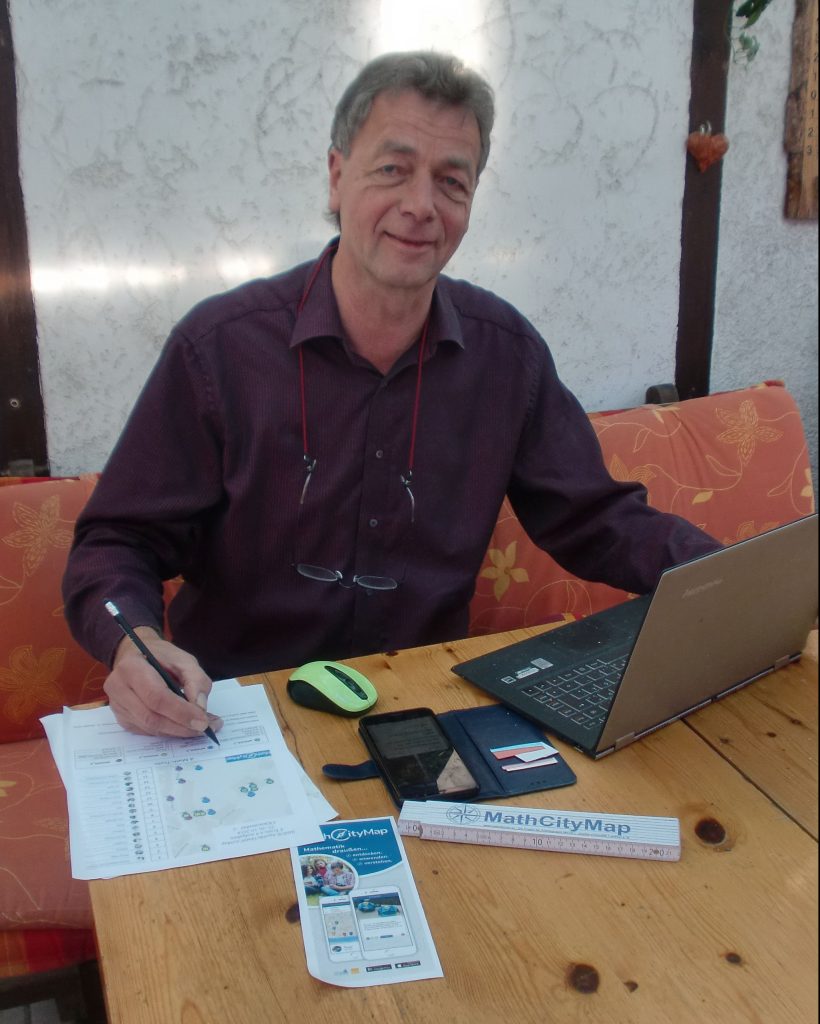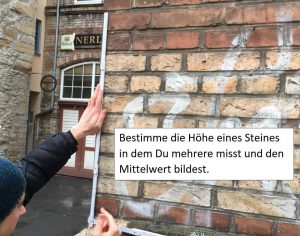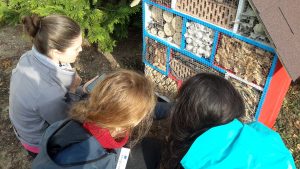MathCityMap certifies active members within the MCM community. The most comprehensive MCM certificate is the “MCM Educator”. In order to be certified as an “MCM-Educator”, it is necessary to have created tasks and trails, as well as a whole series of task reviews according to the MCM criteria. In addition, the successful participation within an official MCM training is necessary. As an MCM Educator, you have the right and the obligation to provide official training in the name of MathCityMap, and you have access to the materials of MCM.
On the occasion of the certification as “MCM Educator” MathCityMap interviewed Jörg Kleinsteuber.
Hello Jörg, could you briefly tell us something about you and your experience with digital media in school?
I am a teacher of math, physics and computer science at the Elisabeth-Gymnasium in Eisenach. I am happy me and my students various digital aids in my lessons, e.g. we work on our school with: bettermarks.de, lo-net², phyphox, Geocaching, APP clevery (Ma and En), TI-nspire CAS, TI Innovator & Rover, padlet.com, Lego mindstorms, KAHOOT, scratch, calliope mini, learning snacks, among others.
How did you hear about MCM?
I discovered MathCityMap in March 2018 during a workshop at the MNU conference in Erfurt.
What convinced you about the system? What do you think is special?
I was fascinated by the combination of classical mathematics with digital support. Mathematics does not have to be complicated calculations and effortful applications. Small tasks with practical relevance, where learners themselves have to become ACTIVE by measuring, modeling, estimating, discussing in small groups offer plenty of potential for student activities.
The possibility to use the smartphone as a support is of course a matter for the learner but also motivating. At the same time this reduces my effort in the care, because the APP provides feedback in the form of clues, model solutions and also offers gamification (points). A great mix! In the follow-up in the classroom very stimulating discussions appear.
What do you intend to do as an MCM Educator? What are your plans for MCM?
As an MCM Educator, I would like to introduce other teachers to this opportunity of “change” for their lessons. At the SINUS Conference in Apolda (Thuringia) at the end of October 2018 , for example, interested teachers in a workshop test these possibilities themselves.
So far, we have already created a pool of about 30 tasks around our school in Eisenach. This may take some work, but first of all, everyone can now use these tasks and secondly, there are already some tasks created by students. When students themselves develop such tasks, the intensity of their engagement with the content, as well as their digital implementation is much higher. For example, Grade 10/11 students prepared for the Open House, which was then enthusiastically resolved by the visitors.
Also, in Eisenach there are already 2 public trails, which can be used by all those interested.
Gladly, I also examine new tasks of other users. As a result, I often get suggestions for great types of tasks and at the same time help to ensure that even more ready-made tasks and routes are available for public. Although MCM is mainly relevant to the subject of mathematics, during the review I have already seen tasks from other departments – there is no limit to the creativity of the users.
Thanks for the Interview and your encouraged effort for MCM!

MCM Educator Jörg Kleinsteuber, Teacher at Elisabeth-Gymnasium in Eisenach








